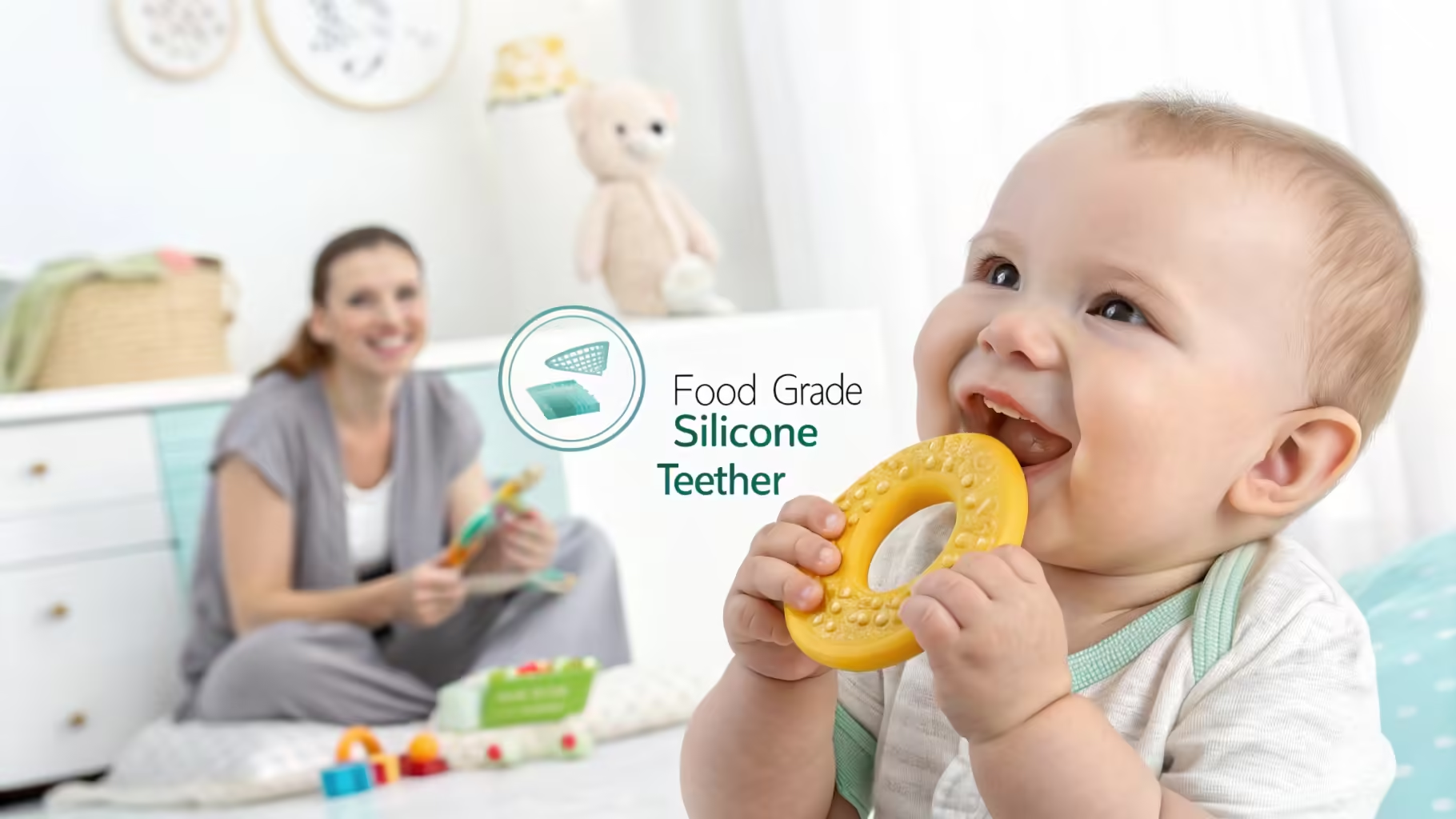
Choosing the right silicone teether for your baby is crucial. With so many options available, how can you be sure you’re selecting a genuinely food-grade product?
Ensuring your silicone teether is food-grade guarantees safety, durability, and peace of mind for your baby’s teething needs.
I remember the anxiety I felt when selecting my first teether, unsure of which ones were truly safe. Here’s how I navigated the choices to find the best for my little one.
How can I ensure the silicone teether I buy is genuinely food-grade?
Ensuring a silicone teether is genuinely food-grade involves checking specific indicators and understanding product labeling.
Look for clear labeling, reputable brands, and transparent manufacturing practices to confirm the teether is food-grade silicone.
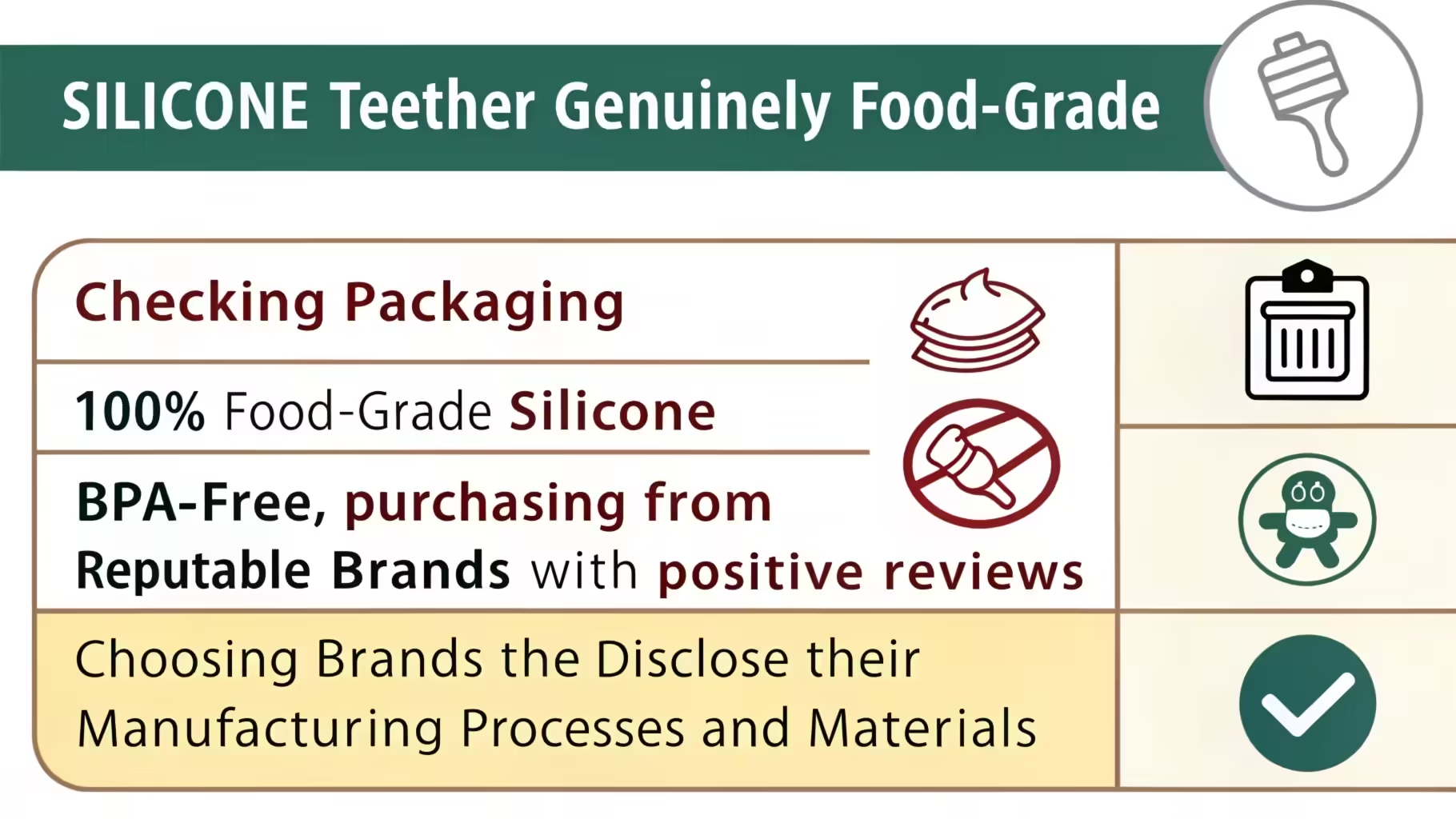
Identifying Genuine Food-Grade Silicone
Not all silicone products are created equal. To ensure authenticity:
- Check the Packaging: Look for terms like “100% food-grade silicone” or “BPA-free.”
- Reputable Brands: Purchase from well-known manufacturers with positive reviews and transparent sourcing.
- Transparency in Manufacturing: Brands that disclose their manufacturing processes and materials used are more trustworthy.
Verification Steps
| Step | Action |
|---|---|
| Read Labels | Ensure the label specifies food-grade silicone. |
| Research the Brand | Check for certifications and customer feedback. |
| Ask Questions | Contact manufacturers for detailed product information. |
What are the signs that a silicone teether might be unsafe?
Recognizing an unsafe silicone teether involves inspecting both the product and its performance during use.
Watch for unusual odors, discoloration, and physical damage, which can indicate compromised safety standards.

Warning Indicators
- Unpleasant Odors: A strong chemical smell can suggest harmful additives.
- Discoloration: Changes in color may indicate degradation or contamination.
- Physical Damage: Cracks, tears, or rough edges can pose choking hazards.
Safety Checklist
| Sign | What It Indicates |
|---|---|
| Chemical Odors | Presence of non-food-grade materials |
| Color Changes | Breakdown of silicone material |
| Physical Flaws | Potential choking or ingestion risks |
Are there any specific certifications to look for in food-grade silicone teethers?
Certifications play a vital role in validating the safety and quality of silicone teethers.
Look for certifications like FDA approval, LFGB compliance, and BPA-free labels to ensure the teether meets high safety standards.
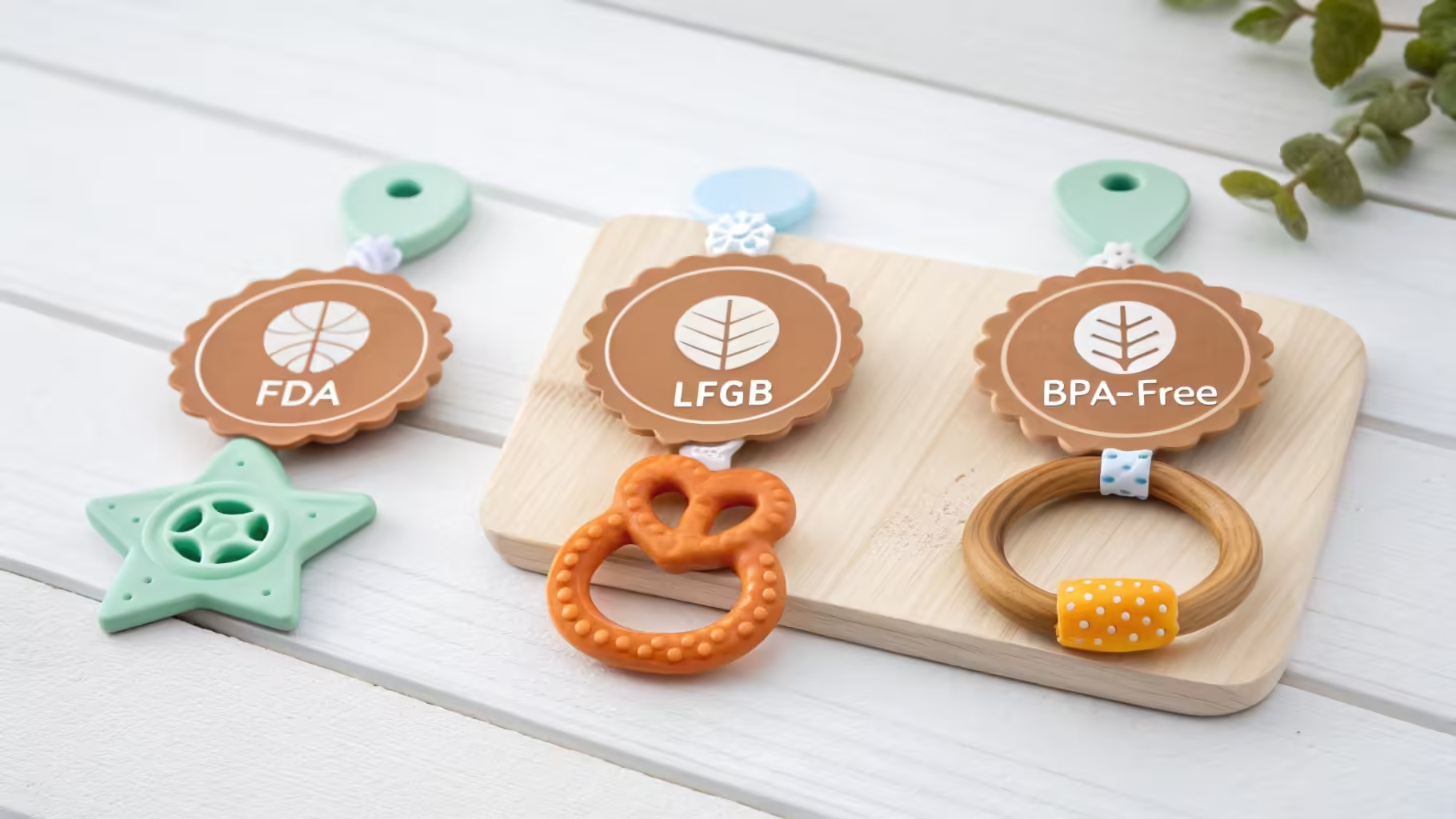
Key Certifications
- FDA (U.S. Food and Drug Administration): Ensures the silicone is safe for food contact.
- LFGB (German Food Standard): Guarantees the absence of harmful chemicals in food-grade materials.
- BPA-Free: Indicates the product is free from Bisphenol A, a harmful chemical.
Certification Importance
| Certification | Description | Importance |
|---|---|---|
| FDA | U.S. approval for food-safe materials | Ensures compliance with U.S. standards |
| LFGB | German standard for food contact materials | Guarantees European safety levels |
| BPA-Free | Free from harmful Bisphenol A | Reduces risk of chemical exposure |
How does food-grade silicone compare to other non-toxic materials for baby teethers?
Comparing food-grade silicone to other materials helps in making informed decisions about teether safety and functionality.
Food-grade silicone offers superior durability, flexibility, and safety compared to materials like wood and plastic, making it an ideal choice for baby teethers.
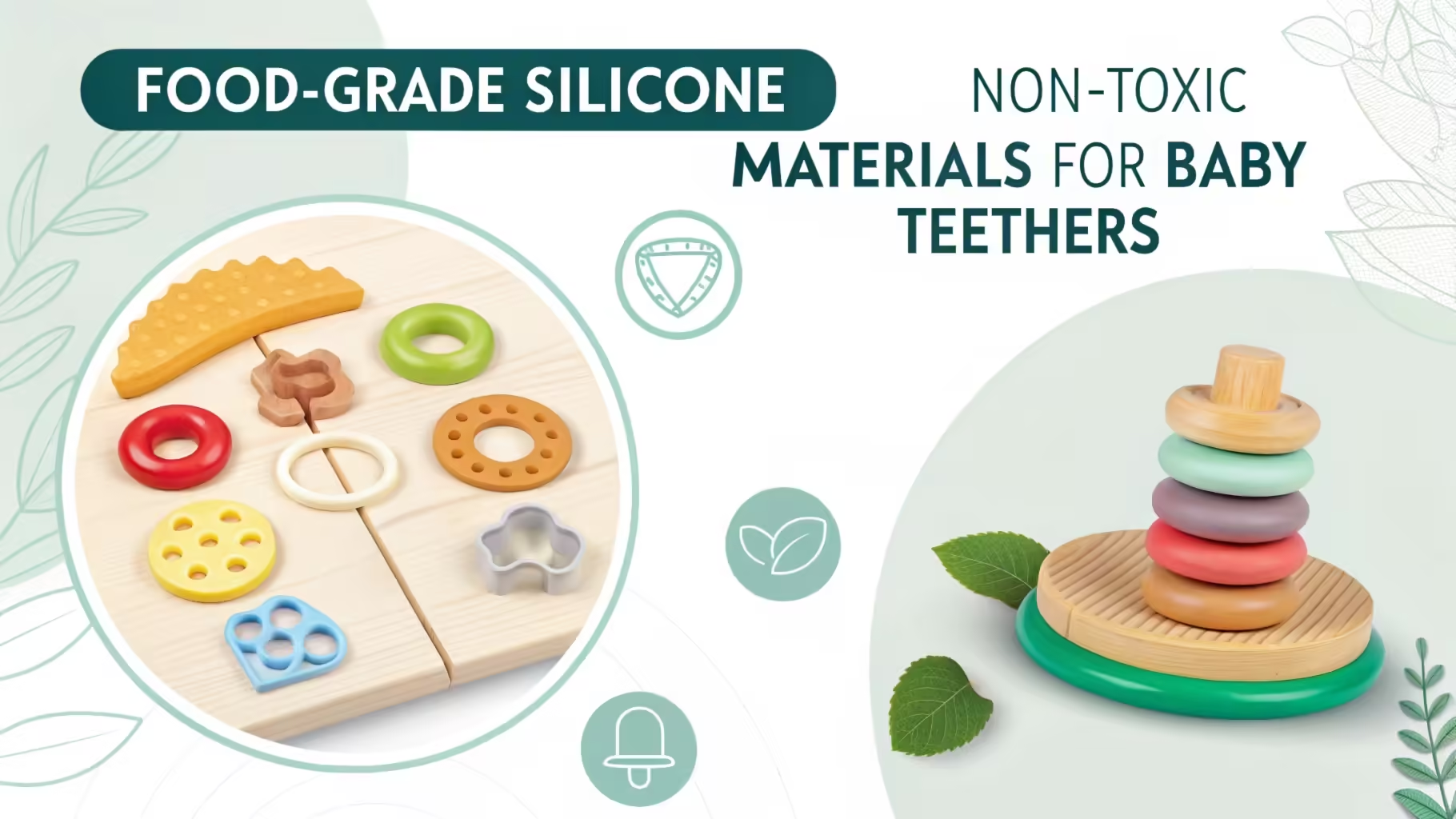
Material Comparison
| Material | Durability | Flexibility | Safety | Maintenance |
|---|---|---|---|---|
| Food-Grade Silicone | High | High | Non-toxic, BPA-free | Easy to clean |
| Wood | Moderate | Low | Natural, but requires treatment | Requires more care |
| Plastic | Low | Low | Risk of BPA, microplastics | Difficult to sanitize |
Advantages of Food-Grade Silicone
- Durability: Resistant to wear and tear.
- Flexibility: Safe for babies to chew without causing damage.
- Safety: Free from harmful chemicals, ensuring safe use.
Can food-grade silicone teethers be used in the freezer for added relief?
Using silicone teethers in the freezer can provide additional relief for teething babies, but it must be done correctly.
Food-grade silicone teethers can be safely used in the freezer, offering soothing coldness that helps alleviate teething discomfort without compromising the teether’s integrity.
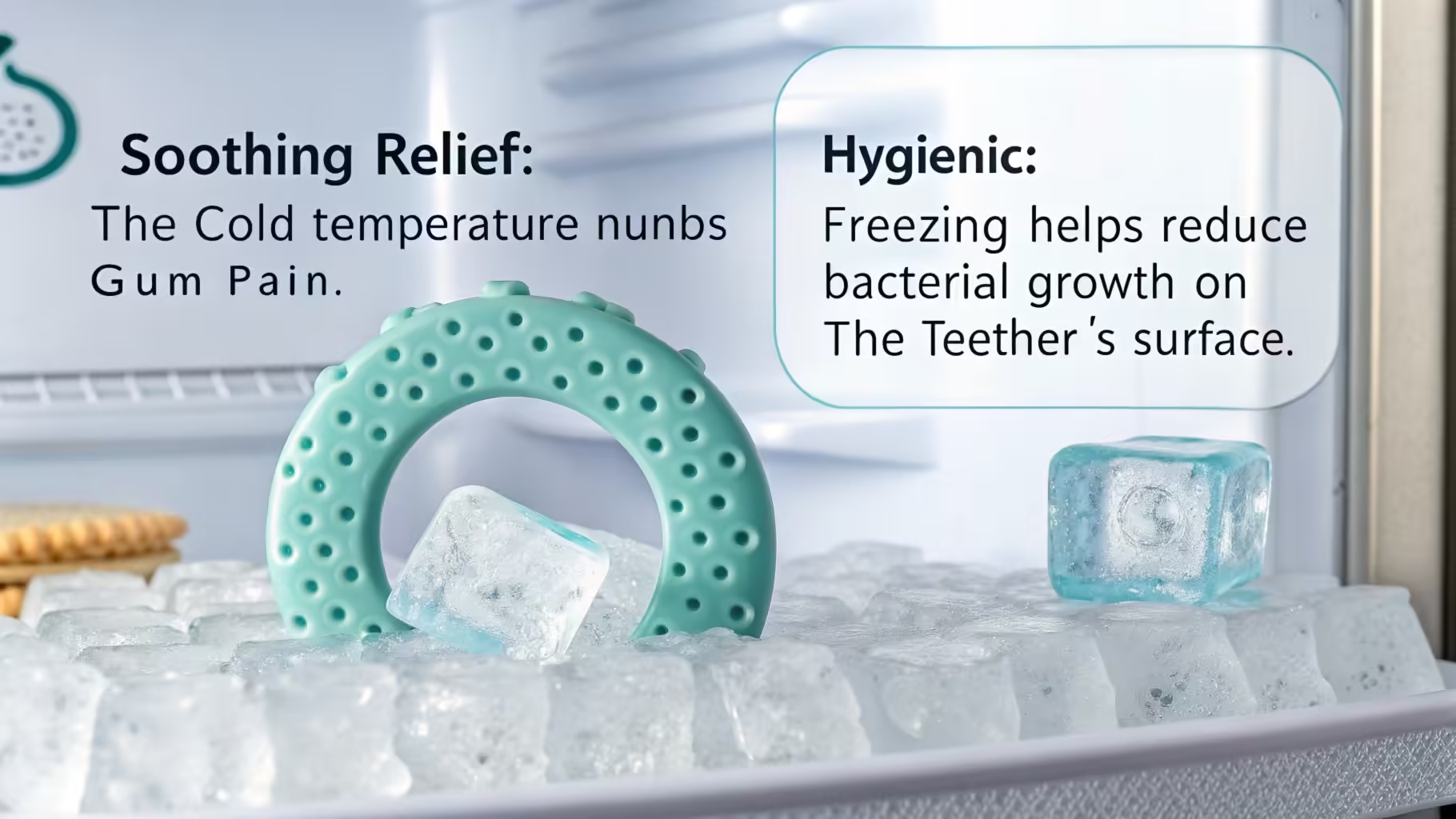
Freezing Benefits
- Soothing Relief: The cold temperature numbs gum pain.
- Hygienic: Freezing helps reduce bacterial growth on the teether’s surface.
Usage Guidelines
| Step | Action |
|---|---|
| Clean Before Freezing | Wash the teether thoroughly with soap and water. |
| Freeze Properly | Place the teether in a clean freezer bag to prevent contamination. |
| Monitor Usage | Ensure the teether is not too hard for the baby’s gums. |
Safety Tips
- Avoid Prolonged Freezing: Limit the time the teether spends in the freezer to maintain its flexibility.
- Check for Damage: Regularly inspect the teether for any signs of wear or cracks after freezing.
Conclusion
Ensuring your silicone teether is genuinely food-grade provides safety, durability, and peace of mind, making it the best choice for your baby’s teething journey.
